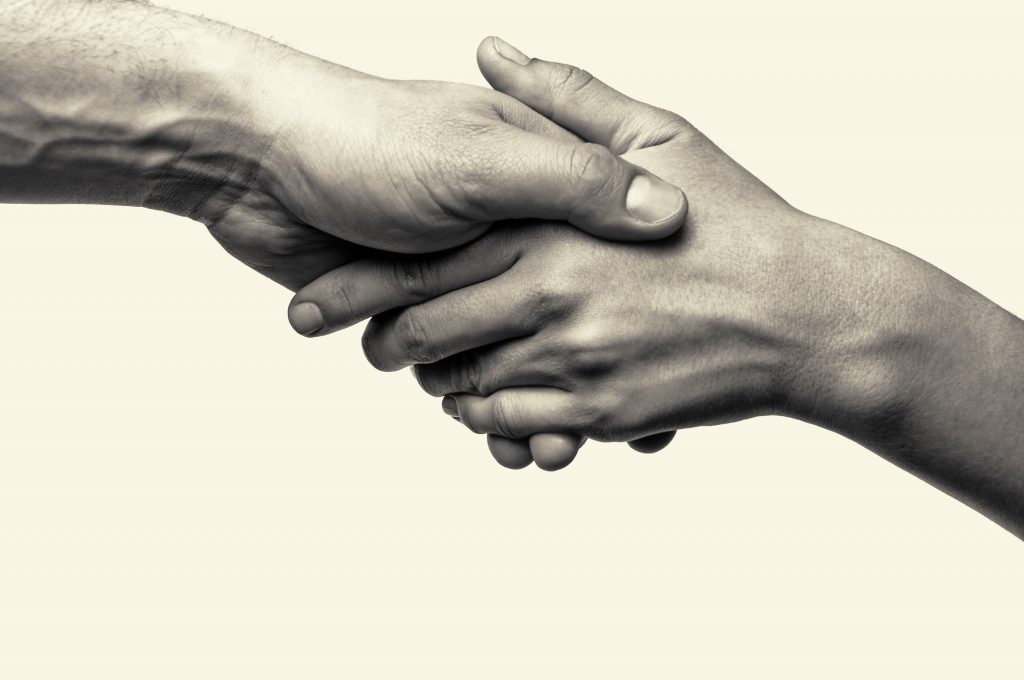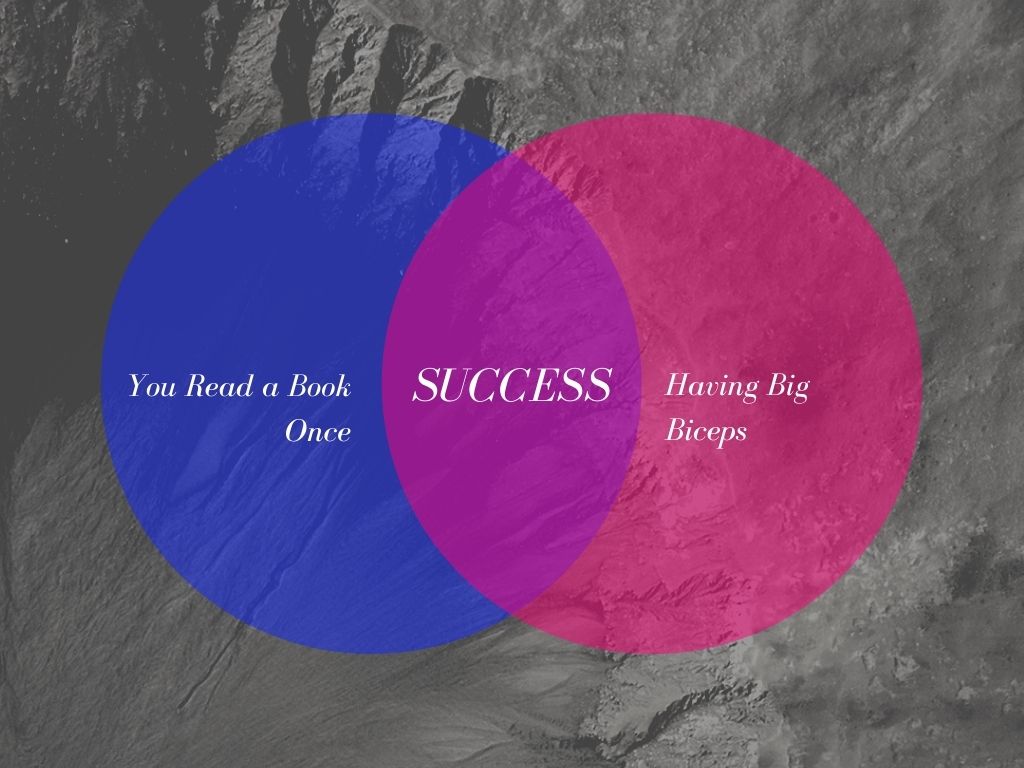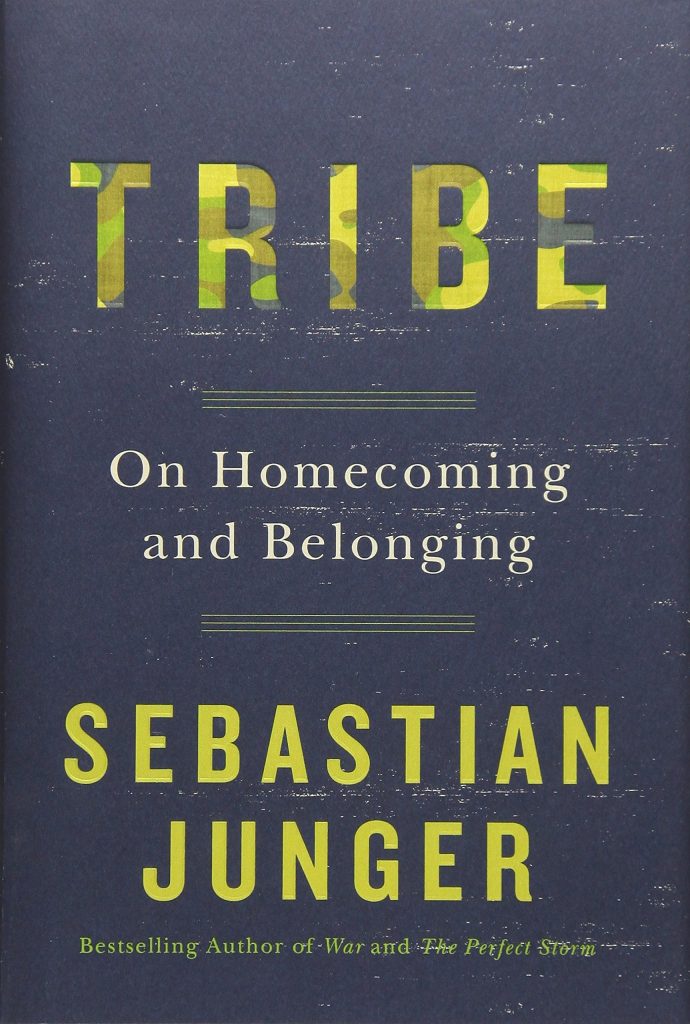
Tony’s Brief Intro
Venn diagrams can be a very useful tool to help illustrate the relationships amongst a finite group of things. Circles that overlap have a commonality while circles that don’t overlap do not share those traits.
Let’s use the fitness industry as an example.
“Success” as a fitness professional can be broken down like this:

LOL – Just kidding.
It’s actually more like this (overly simplified, of course, for brevity’s sake):

There’s no shortage of resources out there highlighting the stuff on the left. It only makes sense that a personal trainer knows how to coach a squat or that they can differentiate one’s ass from their acetabulum, and there’s an abyss of ways to gather and learn that information.
On the right side, however, things becomes a bit more convoluted. Those things are less talked about and as a result are harder to learn (much less appreciate their importance).
Today’s guest post by Michigan based fitness trainer, Alex McBrairty, highlights the right-hand side. I promise you that if you’re a fitness professional this information is relevant and will undoubtedly help you grow your business.
How the “Friendship Formula” Can Enhance Your Fitness Business
Clients work with coaches who they enjoy being around.
At the end of the day, most clients don’t know the difference between good advice and bad advice, but they can tell the difference between having a good experience or a bad one.
Providing a good experience boils down to being able to connect with your clients.
But do you know how to connect with clients in a meaningful way, one that shows them you care and have their best interests at heart? The purpose of this article is to help you understand the psychological foundations for connecting with others. This process involves more than small talk and having the courage to go out and meet others.
Fortunately, the art of human connection can be broken down into a relatively simple formula.
We’ll call it, “The Friendship Formula.”
There are three core components of this formula: familiarity, likability, and vulnerability. Each component fulfills a particular role, creating a feedback loop that allows the relationship to reinforce and strengthen over time. If you learn how to implement this process like any other system in your business, you can attract and sign more clients, improve retention rates, and build a thriving coaching business helping people.
Familiarity
In 1950, researchers studied the community life of a group of veterans living in the same housing complex [1]. The results they found were surprising. One of the best predictors of closeness between individuals was their physical proximity to one another.
This same effect was repeated in another study completed in 1967 measuring the social interactions and relationships among college freshmen sharing the same dorm. Physical proximity was again a strong predictor of the strength of closeness between students—roommates were most likely to become friends, followed by neighbors immediately next door, then neighbors down the hall, then lastly by neighbors on a separate floor [2].
Proximity Principle
The proximity principle is the idea that mere physical closeness increases interpersonal attraction. In other words, repeated physical exposure to the same people increases the likelihood that you will become friends. This is due in part to the mere exposure effect and the attribution of perceived similarities (more on this in a bit).
Mere Exposure Effect
Another psychological phenomenon that supports the benefit of physical proximity is the mere exposure effect. This states that we tend to prefer things that are more familiar to us.
Think of your favorite comfort foods.
Likely you consumed these foods often as a child, and it is this familiarity that creates your sense of comfort upon re-experiencing them.
Additionally, studies have shown that we even prefer words that we hear more often [3]. If the proximity principle sets you up for increased familiarity, the mere exposure effect comes in for the alley-oop to allow this familiarity to breed into increased positive emotions toward you. Combined, they set the stage for a new connection to blossom.
Christina Abbey, an online fitness coach, understands how to create this proximity and exposure on the gym floor. Whether she’s training clients, performing her own workouts, or just being available to socialize, she makes sure she is visible to other gym patrons.
As Abbey said, “People like what they are familiar with. If they constantly see you crushing your workouts and being a positive motivator to others, you will be the obvious choice when they’re ready to ask for help.”
The first step in creating new connections with other people is to ensure you are being repeatedly exposed to them. Being seen on the gym floor, attending parties and events they might also be attending, participating in similar activities, and being generally as visible as possible leads to this familiarity.
This could also include online visibility—via social media posts and interactions.
Andrew Coates, fitness coach, writer, and host of the “Lift Free and Diet Hard” podcast, is a big supporter of creating this familiarity via a strong social media presence. Coates suggests being consistent on your platform, following and interacting with your followers, and regularly sharing high-value content. Combining those elements creates a sense of “being around,” which can breed that familiarity with you and your work that can draw in potential clients.
Likability
The second component of creating new relationships is establishing likability. People won’t want to be around you, nor give you their money, unless they like you. Being liked is so important, in fact, that Dr. Robert Cialdini identified it as one of the six principles of persuasion in his book, Influence.

Note From Tony: I shoulda included a picture of the book Influence here, but decided on Gizmo instead; one of the most likable creatures ever. EVER!
There are two core concepts important to understanding how to create likability: similarity and reciprocity (another of those persuasion principles).
Perceived and Actual Similarities
The power of the proximity principle lies in our assumptions about others. When we come into frequent contact with the same people, we often assume we have more things in common than that which is immediately evident. These perceived similarities lead to a greater sense of liking.
This occurs for a few reasons.
First, we craft our own self-identity, at least in part, by those we choose to associate with. This is called social identity theory. If we maintain a particular view about who we are as a person, we are more likely to self-select individuals who support that view—people who hold similar interests, personality traits, and world views [5]. We like those similar to us because they prove that we are who we think we are.
The second factor that leads to our favorability toward similar others is that it makes the relationship easier to maintain. When we become friends with individuals who carry wildly different views, or behave in very different ways, it exposes us to a greater likelihood of potential conflict with these individuals.
For example, imagine a trainer who took a drill sergeant approach, and a client who responded best to positive affirmations.
These differences would increase the likelihood of conflicts arising in the future. The coach’s lack of positive regard actively discourages the client instead of giving them the push that the coach expects. Now the coach wrongfully believes the client is unmotivated, and the client believes that the coach simply doesn’t care enough to acknowledge them. Befriending those different from us exposes us to these potential disagreements.
Therefore, if you want to give yourself an edge in establishing bonds with new people, work to identify and reinforce any similarities that might exist. This could include values, hobbies, food preferences, even favorite book genres; the possibilities are endless.
Looking at Coates’ towering figure, you wouldn’t immediately know that he’s an avid fan of fantasy fiction, comic books, and video games. These hobbies allow him to connect with individuals who share those interests, even when they might have little else in common. As Coates put it, loving “nerd culture” before it was cool doesn’t always align with growing up active, so his shared interest in that material allows him to connect better with this audience.
Tony Gentilcore, CSCS, has worked with everyone from powerlifters, figure competitors, moms, CEOs of big companies, and everyone in between. Gentilcore takes a two-tiered approach to finding similarities with his clients.
The first is to focus on the fact that both he and his clients are there to get the best results possible for the client. In other words, they’re both playing for the same team. (This focus on teamwork can also help create shared experiences. More on that in a minute.)
His second strategy is to ask about movies. In fact, Gentilcore includes a question in his intake asking new clients to share their favorite movie. As he says, “It serves as a nice ice-breaker. And on the off-chance that there’s awkward silence at any point during one of their initial sessions, I can always bring it up: ‘So, John, Eyes Wide Shut huh? what’s your favorite scene?’”
Fidelio. Cue awkward silence.
Even if there aren’t any immediately identifiable similarities between you and another person, you can almost always find some sort of shared interest or aspect of your backgrounds if you dig deep enough. Let your natural curiosity take over and explore the interests of others.
Reciprocal Liking
We have an inherent need to both act fairly and be treated fairly. As a result, whenever someone does something for us, be it a favor or giving a gift, we have a tendency to want to repay the giver in kind. Usually this is completed through a favor completed at a later time or a gift given in exchange. This effect also extends to our relationships with others.
When it becomes clear that others like us, we feel compelled to reciprocate by liking them in return [4], a concept referred to as reciprocal liking. Therefore, if you want to create new relationships with others, start by showing your liking toward them. In exchange, they will likely take a more favorable view toward you and be more open to establishing a relationship.
One simple way to create reciprocal liking is to tell your clients explicitly and regularly that you appreciate their business and truly enjoy working with them. This approach has such a big pay-off that it’s astonishing more professionals don’t do it as a consistent part of their practice. (And if you don’t enjoy working with them, you have a different kind of problem and may need to reevaluate what you’re doing on a bigger scale.)
Even if you seemingly have nothing in common during your first interactions (you can’t readily find any similarities), let your curiosity take over.
The best way to demonstrate liking and be interesting is to be interested.
Inquire into their interests and other areas of pride. Ask meaningful questions that allow you to learn more about the individual whom you’d like to create a connection with. Surely, if you are truly curious, you will eventually find something you have in common. You might even create a new shared interest that didn’t exist before.
In fact, this is one of Abbey’s favorite parts of the job:
“It’s a unique experience to not only work with people from all walks of life but to build relationships and connect with them over time.” She admits that sometimes it’s harder to find these similar interests. In these situations, she uses as many clues as she can, “T-shirts can give you a huge insight about what people are into. Places they’ve been, events they attended, or bands they love. If you are really listening, then you’ll likely discover at least one thing you have in common.”
When Mike Doehla, founder of Stronger U Nutrition, started his company, he had no idea about entrepreneurship or running a business. Two of his early clients were involved in multiple businesses in his area, and through them he began to learn more about it.
Because of them, Doehla eventually made the decision to quit his day job and focus on building Stronger U full-time.
I guess you could say that was a good choice, given that Stronger U has now helped tens of thousands of clients across the globe. Doehla’s interest in entrepreneurship remains. He’s gone on to be involved in seven other businesses and constantly reads about the subject. His passion for entrepreneurship started because he wanted to learn more about his clients.
Being regularly visible to and present with those you’d like to befriend increases your familiarity to them, which, in turn, improves your likability and their potential desire to want to connect with you. Building on shared connections and expressing your genuine appreciation for your clients further enhances your likability.
Both of these factors are relatively superficial, however, and while important for initially establishing a relationship, by themselves they are not sufficient to cultivate deeper bonds. For that more enduring connection, you’ll need to create vulnerability in order to develop closeness and trust.
Vulnerability
Vulnerability is defined as a state of being that exposes us to the possibility of being hurt or harmed, either physically or emotionally.
Being vulnerable in a relationship involves sharing our biggest dreams, our deepest fears, our greatest joys and our worst pain. This act of complete openness is often avoided by so many simply because of the risks of this exposure. By giving this information to another person, we give them the power to do us harm.
Yet, while it may seem so hard to be vulnerable with another person—especially someone we don’t know very well—research has shown that this vulnerability is actually the key to creating deep, meaningful relationships with others [6].
The Power of Shared Experiences
Why does vulnerability do such an excellent job of bringing people together into meaningful relationships? At least part of the effect can be explained by concepts presented by Sebastian Junger in his book, Tribe (and his ideas are supported by prevailing research).

The connectedness created through vulnerability is established because we bond best through shared emotional experiences with others, both positive and negative [7,8]. The ability to identify these shared experiences—through the openness created from being vulnerable—is what allows the connectedness of the relationship to solidify.
Mike Doehla knows how important these shared experiences are. In his work, the topic of cancer comes up and causes quite a disruption in clients’ emotional state and focus. As Doehla put it, “The last thing on people’s minds after a cancer diagnosis, or death, is what they’re going to eat. I’m a pretty open dude, so I would share my story often.”
The story he’s referring to is about losing his mom to cancer when he was just 23 years old.
“When I lost my mom, nothing else mattered, especially eating well. I wanted my clients to understand I could relate, and I knew what was most important in that moment. And it wasn’t the food. It was the family and the feelings. In these situations, I would always make sure people knew I was here and I did not expect perfection of any kind. I was just a shoulder they could lean on who could help minimize extra stressors if they needed it.”
Gentilcore is unbashful when it comes to discussing his personal journey with mental health and how he still routinely speaks to a therapist on a monthly basis. He sees how society prides itself in our ability to bottle up and compartmentalize our thoughts and feelings, and his openness can sometimes take clients by surprise.
“I often bring up my past bouts with depression with clients (when appropriate), if for no other reason than to emphasize how helpful it was for me that I started seeing a therapist. My thought is that if I am open about my experiences, then maybe it’ll be enough of a nudge to encourage a client of mine to seek out help if he or she needs it.”
Not only does sharing their stories create a shared emotional experience between each of these trainers and their respective clients, but their clients likely feel heard and validated, too—the opposite of being judged. When you can express your humanity, your clients will feel valued and cared for.
There is no better customer service strategy.
Empathetic Balance
While vulnerability appears to be the most important factor in creating closeness with others, proper judgment should be used when deciding when it is appropriate to share these experiences and feelings. Creating shared experiences allows us to empathize with others—the ability to feel the emotions they feel.
This means we can feel the positive emotions expressed by others, but it also means we will experience the negative emotions, too. If you are overly sharing your negative experiences and feelings with others, it can have the opposite intended effect by causing others to avoid future social interactions with you because they don’t want to be drawn into your negative energy.
If you are constantly “dampening the mood,” others will seek to avoid your company.
Think about what happens when a client upsets this balance with their constant negativity. Abbey and Coates agree that if this negativity becomes too great, the best course of action is to refer out or otherwise get rid of the client. Doing so can protect your energy and allow you to be more positive toward the other clients in your care.
Imagine if the situation were reversed?
A trainer who brings too much negativity is going to repel clients.
It is important, then, to not only use vulnerability as a tool to deepen relationships, but also to balance negative openness with positive openness—sharing your dreams, aspirations, and joyful experiences in addition to your fears and bad experiences.
Strategic Vulnerability
When considering when to create these shared experiences using vulnerability, remember the two most important factors: relevancy and empathetic balance.
You should share moments of vulnerability as they become relevant to the conversation, seeking to balance positive and negative experiences. Additionally, make sure the conversation remains directed to your client.
Disordered eating is something that most people never seek professional help for. Knowing this, as soon as Abbey’s clients begin to show signs of disordered eating, she uses that moment to open up about her own struggles with disordered eating.
Her goal in sharing her experience is first to let them know that they are not alone and shouldn’t feel ashamed.
Additionally, it’s to help them feel validated and encouraged to seek help from a registered dietician as well as support from people they trust. Opening up about her own struggles is a very personal subject, but it opens the door to creating deep bonds with many of her clients.
It takes a certain level of bravery to open yourself up to someone else.
Your client may not always be the first to share.
You may find yourself being vulnerable without an immediate return of vulnerability from the other person. This is normal and may just mean they need more time to feel comfortable. Fortunately, this doesn’t necessarily mean your openness was in vain. Once you’ve experienced your first offering of vulnerability, you have introduced a newer, stronger level of familiarity—which will breed greater likability and future moments of vulnerability.
Bringing It All Together
You now have the tools to better connect with current and future clients. Yet, there is one imperative piece of the puzzle missing that you must supply: a genuine interest in wanting to connect with others.
Most people are very aware when someone is being fake, and faking any of these steps can lead to disaster. You must be genuinely curious about others and want to make a connection with them in a real, authentic way.
Also consider that once a connection is established, it requires work to maintain. You must continually traverse this loop so long as you want to prevent the relationship from going stale.
Think of close childhood friends whom you no longer visit frequently. You’ve likely been very familiar, liked, and vulnerable with them during periods of your life. Now that you’ve grown apart, the relationship is not as close as it once was. This can happen to any relationship, even those with the closest of friends and loved ones, let alone your clients, without the proper care and attention it deserves.
You can use this formula again and again to reach and connect with more people. With this knowledge, you are better prepared to build new relationships to boost your client roster and retention rates. Building strong relationships will inevitably lead to greater success in your business.
About the Author
Alex McBrairty is an online fitness coach who owns A-Team Fitness in Ann Arbor, Michigan. Obese as a child and teenager, he blends fitness and psychology to help his clients discover their own hidden potential.
He has a bachelor’s degree in psychology from the University of Michigan and is certified by the National Academy of Sports Medicine.
His articles have appeared in Breaking Muscle and The Personal Trainer Development Center, and he’s contributed to Muscle & Fitness, USA Today, Men’s Fitness, and Prevention.
Website: ateamfit.com
Facebook: facebook.com/alex.mcbrairty
Instagram: @_ateamfit_



